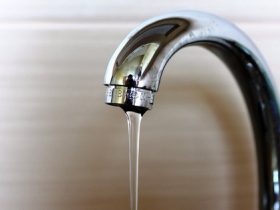Straightforward Measures to Boost Low Water Pressure in Your Home
Straightforward Measures to Boost Low Water Pressure in Your Home
Blog Article
We have encountered this great article on Low Water Pressure in the House? listed below on the net and accepted it made sense to discuss it with you over here.

Low tide stress in your house can be an irritating trouble, impacting everything from showering to washing recipes. If you're experiencing weak water flow, there are a number of feasible causes and options to check out. In this guide, we'll go over usual factors for low water pressure and practical steps to deal with the issue properly.
Introduction to Low Water Stress
Low water pressure occurs when the circulation of water from your taps, showers, and other components is weak than normal. This can make day-to-day tasks more challenging and much less efficient. Recognizing the root causes of low tide pressure is vital to locating the best remedy.
Usual Reasons For Low Water Pressure
Faulty Stress Regulators
Stress regulatory authorities are accountable for preserving consistent water pressure in your home. If they malfunction, it can lead to low tide pressure or unequal circulation throughout the house.
Municipal Supply Of Water Issues
Occasionally, the trouble lies outside your home. Community water system issues, such as main line leakages or maintenance job, can briefly minimize water pressure in your area.
Pipeline Obstructions
Over time, pipelines can come to be clogged with natural resource, sediment, or debris, restricting the circulation of water. This is a common problem in older homes with galvanized steel pipelines.
Corrosion
Deterioration within pipelines can result in leaks and minimized water stress. Corrosion buildup can tighten water circulation, especially in aging plumbing systems.
Exactly How to Diagnose Low Tide Pressure
Inspecting Pipelines
Check noticeable pipelines for indicators of leakages, deterioration, or obstructions. Focus on any type of unusual sounds, such as knocking or rattling pipelines, which might indicate issues within the plumbing system.
Consulting with a Plumber
If you're not able to determine the cause of low tide pressure, consider employing a professional plumber to perform a complete evaluation. They can determine underlying problems and advise proper solutions.
Examining Faucets and Fixtures
Beginning by evaluating the water pressure at various taps and components throughout your home. If the issue is isolated to details locations, it might show local issues.
Do It Yourself Solutions to Repair Low Water Pressure
Flushing Hot Water Heater
Sediment accumulation in the water heater can limit flow and reduce efficiency. Purging the container occasionally aids remove debris and maintain ideal performance.
Inspecting Stress Regulator
Make sure that the pressure regulator is working properly. Readjusting or replacing the regulatory authority can help recover correct water pressure throughout your home.
Cleaning Aerators and Showerheads
Natural resources can collect in aerators and showerheads, decreasing water flow. Get rid of and clean up these elements regularly to enhance water stress.
Clearing Up Clogs in Pipeline
For small clogs, attempt making use of a plumbing serpent or chemical drainpipe cleaner to clear obstructions in pipelines. Beware when making use of chemicals and comply with security standards.
When to Call a Professional Plumber
If DIY efforts stop working to deal with the problem or if you think significant plumbing problems, it's finest to seek assistance from a licensed plumber. They have the expertise and devices to deal with intricate concerns safely and effectively.
Preventive Measures to Keep Water Stress
Installing a Stress Booster
Think about mounting a pressure booster pump to enhance water pressure in areas with constantly reduced flow. This can be especially useful for multi-story homes or homes with high-demand components.
Tracking Water Usage
Bear in mind water use practices and stay clear of ill-using the plumbing system. Basic changes, such as incredible showers and washing lots, can aid preserve sufficient water stress.
Regular Maintenance
Schedule regular upkeep for your plumbing system to prevent issues such as corrosion, leaks, and blockages. Attending to minor problems early can aid stay clear of more significant repair work later.
Verdict
Dealing with low water stress can be frustrating, however identifying the underlying causes and executing appropriate services can bring back optimal circulation throughout your home. Whether it's cleaning up aerators, inspecting pipes, or talking to a plumber, taking positive actions can guarantee a constant supply of water for your everyday needs.
FOUR WAYS TO FIX LOW WATER PRESSURE NOW
Turning on a shower or faucet only to find the water comes out in a sad, slow drizzle is never a good feeling. How exactly are you supposed to wash a pan or take a quick shower when it takes 10 minutes just to rinse off a little soap? The good news is that when your water pressure is bad, there's always a cause: typically one that can be easily fixed. Here are some of the most common causes of low pressure and what you can do to fix the issue:
DEBRIS AND MINERAL DEPOSIT BUILDUPS
If you notice low water pressure from just one or two of the fixtures in your house, the problem likely has to do with debris buildup. Water is full of minerals and other debris, all of which can accumulate in your pipes and on your fixtures. This can cause a blockage that affects how much water flows through. To fix this, try filling a small plastic bag with white vinegar, and use a rubber band to hang it around your showerhead or faucet. Let the head of the fixture soak for a few hours, and the vinegar should loosen the deposits.
WATER LEAKS
Leaks are another common cause of low water pressure. If water is flowing out of your plumbing through a hole or crack before it can reach your fixture, the pressure coming out of the faucet or showerhead will be lower. A plumbing professional is your best bet for finding and repairing a leak in your water supply pipes.
Leaks are another common cause of low water pressure. If water is flowing out of your plumbing through a hole or crack before it can reach your fixture, the pressure coming out of the faucet or showerhead will be lower. A plumbing professional is your best bet for finding and repairing a leak in your water supply pipes.
A VALVE ISSUE
If you have low water pressure throughout your home, check your main shut-off valve to make sure it's completely open. You may also want to see if there's a pressure-reducing valve installed. If there is, have a plumber help you adjust the settings to get the pressure you're looking for.
OTHERS USING WATER
Believe it or not, your low water pressure could be caused by your neighbors. If you notice low pressure at certain times of day, it may be because you and the people living next to you have similar schedules - when everyone is showering at the same time, the pressure will be lower in every home. Low pressure throughout the neighborhood may also be caused by an issue with your municipal water supply. If that's the case, call the supplier to see if they're working on the issue.
https://www.rotorooter.com/blog/water-leaking/low-water-pressure-fixes/

I was made aware of that article on 10 Reasons for Low Water Pressure in Your House through a good friend on a different blog. I beg you take a moment to share this write-up if you enjoyed reading it. Thanks for your time. Don't hesitate to come by our website back soon.
Call Report this page